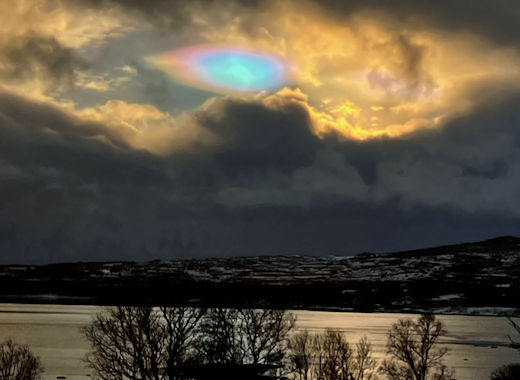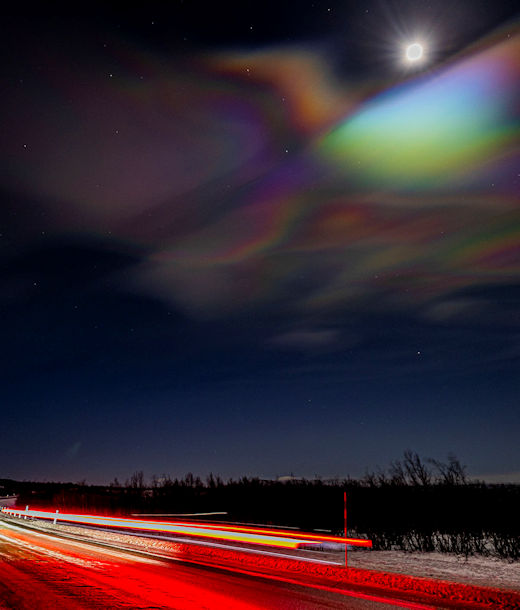MINOR GEOMAGNETIC STORM WATCH: Another solar wind stream is heading for Earth. It is flowing from a canyon-like hole in the sun's atmosphere. First contact with the stream on Feb. 14th could cause a minor G1-class geomagnetic storm with Arctic auroras for Valentine's Day.
POLAR STRATOSPHERIC CLOUDS AT NIGHT: Unusual weather in the stratosphere has set the stage for a rare nighttime apparition of polar stratospheric clouds (PSCs). Marianne Bergli photographed the display last night in Kilpisjervi, Finland:
"The PSCs were even more colorful than auroras," says Bergli. "The full Moon lit them beautifully."
This is rare. Normally, Earth's stratosphere has no clouds at all. Only when the temperature drops to a staggeringly-low -85 C can widely-spaced water molecules assemble into icy Type II PSCs. During a typical polar winter, sky watchers might see them no more than once or twice, almost always during the day when bright sunlight causes their colors to blossom.
Nighttime displays are doubly rare because the clouds must coincide with a bright Moon to make them visible in full color. Tonight is such a night!
"I have seen more PSCs this winter than I have seen before in all my life," says Fredrik Broms of Kvaløya, Norway, a well-known aurora photographer who has been carefully watching the Arctic sky for decades. This is what he saw on Feb. 11th:

"The PSCs were truly amazing," he says. "Since mid-January 2025, I have seen these colorful clouds weekly or every second week."
According to NASA's MERRA2 climate model, the polar stratosphere has been exceptionally cold this winter with temperatures dropping to near 45-year lows. The reason might be the stratospheric polar vortex. This winter's vortex has been strong, keeping cold air bottled up over the Arctic Circle.
Springtime dynamics could soon upset that cold air mass. Until then, Arctic sky watchers should remain alert for PSCs--even at night. They're the most beautiful clouds on Earth.










No comments:
Post a Comment
you got something to say... please say it